Friday, July 31, 2020
USGBC Launches New Strategy For Constructing & Operating Building Post Pandemic
The U.S. Green Building Council (USGBC) announced in May a new strategy to use the LEED standard as a tool to improve living conditions in a post-pandemic world. LEED is Leadership in Energy and Environmental Design, the most widely used green building rating system in the world.
The document, titled Healthy People in Healthy Places Equals a Healthy Economy, asserts that caring for the environment and caring for people’s health go hand-in-hand, and these two factors are the fastest, most effective way to boost global and local economies shaken by COVID-19-related lockdowns.
Reacting to Rapid Change
The biggest immediate changes are adjustments to the current version of the LEED standard v4.1. The USGBC states that these updates are intended to “support indoor environmental quality, cleaning, occupant comfort, operations, better materials and risk management.”
The USGBC also announced the release of new Safety First LEED pilot credits to address “social distancing, nontoxic surface cleaning, air quality and infection monitoring.” These credits include two designed to address cleaning and occupying a space: Cleaning and Disinfecting Your Space, and Re-enter Your Workspace.
Two more pilot credits address the safety of the water supply and air quality in buildings that have been shut down for weeks on end: Building Water System Recommissioning and Managing Indoor Air Quality During COVID-19. Each of these credits apply to the LEED 2009, LEED v4 and LEED v4.1 guidelines. The USBGC site has details on each of these individual credits as well as two credits for the Cities and Communities rating system, although those last two likely won’t impact most individual projects.
An Ongoing Process
It’s important to note that these credits may change as new studies shed light on best practices. To this end, the USGBC announced a Call for Ideas and asked regional CEO Advisory Councils to explore additional ways to assist the industry and the population they serve.
As the world passes through this period of reopening, pulling back and opening again to respond to the pandemic, USGBC has pledged to promote best practice guidance reports to help smooth the transition as occupants re-enter their spaces.
By making these changes and accelerating existing programs such as the USGBC Equity Program (launched in 2019), the minds behind LEED hope to show how green building practices can improve the environment and global health conditions, as well as boost economies. And that, as USGBC President and CEO Mahesh Ramanujam says, will “help rebuild public trust, stimulate the economy and ultimately bring about a healthier standard of living for all.”
Article source here: USGBC Launches New Strategy For Constructing & Operating Building Post Pandemic
Thursday, July 30, 2020
This Is What People Used Before Toilet Paper Existed

A Brief History of Toilet Paper
Toilet paper is selling out quicker than ever before, and as we scramble to find it in stores, we’re left wondering: What did people do without it in the first place? While we’re definitely not suggesting you resort to these options, here are some personal hygiene items that our ancestors used before commercially produced toilet paper hit the markets in 1857.
Shared Sponges on Sticks
Privacy and proper sanitation were scarce luxuries in the public restrooms of ancient Rome. Their outdoor communal restrooms, called “latrines,” had no dividing walls, and people’s cleaning methods would certainly not hold up to sanitation standards today. Each individual would use the same communal cleansing sponge that was attached to the end of a long stick, also called a tersorium.
To clean the sponge after use, it would sit in a container filled with saltwater or vinegar. Besides exposure to an unsettling amount of bacteria on that communal sponge, the Romans had to worry about spontaneous hydrogen sulfide and methane flames exploding from beneath them while using the toilet.
Personal-Hygiene Sticks and Extra-Large Scented Paper
The Silk Road, a network of ancient travel and trade, had many of its own latrines scattered throughout ancient Asia. Archaeologists discovered “personal hygiene sticks” in one located on the outskirts of the Tamrin Basin, believed to date back to the Han Dynasty around 2,000 years ago.
The sticks were crafted out of bamboo, with one end of it wrapped in fabric for wiping. Things eventually evolved, though. The first documented use of toilet paper was in sixth century China. In 1391, a Chinese emperor ordered the production of two-by-three-foot scented sheets of paper that he and his family used in the restroom.
Stones and Ceramic
The ancient Greeks used harsher methods to maintain hygiene: stones, called pessoi, and ceramic pottery shards, called ostraka. Sometimes, as a form of vengeance, the broken shards would have the names of enemies inscribed on it. The same shards would often be used as a means of voting people out of towns based on whose names were written on it.
While the ancient Greeks didn’t have to worry about the modern-day plumbing issues we do, like trying to figure out which toilet paper is the best (and the worst) for your pipes, it’s likely that regularly using such abrasive objects often led to irritation.
Dried Corncobs
When they arrived in colonial America, the British had to get creative with their personal hygiene choices. First, they used dried corncobs as their form of toilet paper. Then, as newspapers and catalogs started being circulated in the late 18th and 19th centuries, many Americans began using pages from the Farmers’ Almanac and the Sears, Roebuck and Company catalog.
Fun fact: Manufacturers often created holes in the corners of their papers so they could be easily hung and used in outhouses. While we’re talking about hanging toilet paper, here are 12 things you should never flush down the toilet.
Medicated Paper
Finally, in 1857, Joseph Gayetty started to manufacture his own “medicated paper,” which he made out of hemp and aloe vera. This not-so-painful alternative inspired others to try to sell their own versions, such as the Hoberg Paper Company of Green Bay, Wis., which was later renamed Charmin. Many companies experimented with different colors, but here’s why most ultimately decided to go with the bright white toilet paper we know and love today.
Article source here: This Is What People Used Before Toilet Paper Existed
Article source here:
Lowe’s Lands Exclusive Partnership With EGO

Late last week, Lowe’s announced in a press release that it would become the exclusive dealer of EGO outdoor power equipment starting this December. EGO products will be available on the Lowe’s website this fall, and are expected to be stocked in stores across the United States by February 2021.
“We are relentless in bringing the best quality, innovation and brands to our consumers, and today’s announcement is another bold step forward in our pursuit of bringing the best outdoor power equipment offering to our stores,” said Bill Boltz, Lowe’s executive vice president of merchandising.
The release also revealed Lowe’s will begin selling select SKIL battery-powered outdoor power equipment in late 2020.
This announcement came just a day after The Home Depot confirmed it would stop carrying the EGO line in their stores to make way for a “merchandise reset.”
“Earlier in the year, the company began refreshing its presentation of the outdoor power category to make it easier for customers to determine which equipment would best meet their needs,” The Home Depot announced a press release.
While it might be seen as a lateral move for EGO, pairing with Lowe’s is a good match. It partners EGO with the top retailer for outdoor power equipment, based on market share. By the end of the year, Lowe’s OPE brand portfolio will include Honda, John Deere, Craftsman, Husqvarna, SKIL and EGO.
“EGO is an undisputed industry leader in creating cutting-edge technology and design,” said Boltz. “This line of cordless power equipment is trusted by both DIY and Pro customers to take on any lawn and garden project, with convenience and ease.”
Article source here: Lowe’s Lands Exclusive Partnership With EGO
Article source here:
Klein Tool’s New Thermal Imager Streamlines Troubleshooting

It’s not every day that a new high-tech tool is released that pretty much any pro could use regardless of the specific trade they’re in. But that’s exactly the case for Klein Tool’s new TI250 Rechargeable Thermal Imager, an adaptable and easy-to-use troubleshooting tool for pros across the trades.
It doesn’t matter if you’re a plumber, HVAC technician, electrician or a home inspector. If you keep this thermal imager in your tool belt, chances are you’ll use it regularly.
What’s New
Display
This thermal imager makes it incredibly easy to troubleshoot issues, even if they’re happening on the other side of a wall. The display is large, detailed and easy to read, with more than 10,000 pixels available to showcase the widest possible range of cold and hot temperatures. There are even three distinct color palettes to cycle through to make sure every range of temperature is discernible.
Ease of Use
One thing that stands out immediately on the Klein TI250 are the size of the buttons. This may not seem like a big deal, but it is. Construction pros need to push buttons on their devices even if they’re wearing bulky, cumbersome gloves, so the larger the button, the better. It’s also nice that it only takes one click to capture an image. Just press the shutter button on the top of the device, and an image of whatever’s on your screen will be saved to the MicroSD card in the memory card slot.
Rugged Casing
The last test a tool or device needs to pass is whether it will hold up to any less-than-ideal conditions on the jobsite. Thankfully, this little machine is made with a thick ABS plastic casing around the important tech parts, serving the same purpose as a case on your phone. The charging port and memory card slot are also covered by a rotating port cover that will keep dust and debris from seeping inside and clogging everything up.
Specifications and Features:
- Display Size: 2.4-inch LCD;
- Memory: MicroSD® Card (not included);
- Temperature Range: -4 to 752° degrees F (-20 to 400 C);
- Battery: Rechargeable;
- Included in Box: Thermal imager, micro-USB charging cable, carrying case and instructions;
- Price: $249.
Article source here: Klein Tool’s New Thermal Imager Streamlines Troubleshooting
Article source here:
Report: COVID Has Not Impacted Home Buyers’ Plans

While the coronavirus pandemic has undeniably upended normal life across the world and delivered major blows to economies globally and locally, there is one thing it apparently hasn’t been able to change. According to the National Association of Home Builder’s latest Housing Trends Report, the coronavirus has had little impact on the percentage of people in the U.S. looking to purchase a home.
The new data shows that in the second quarter of 2020, 11 percent of those surveyed by the NAHB were planning on buying a house in the next 12 months. That number is down slightly from the 12 percent recorded in the second quarter of 2019, showing a remarkable consistency in purchasing plans year over year despite COVID uncertainty.
Interestingly, the share of millennials looking to purchase a home actually rose two percent from 2019 to 2020. Millennials were also the group most likely to buy a home by a wide margin, with 19 percent saying they were planning on it compared to 12 percent of Gen Xers and just five percent of Boomers.
The good news for home builders is that the data also suggests people are not just casually floating the idea of buying a house. Thanks to historically low mortgage rates, large percentages of the same people who say they are “planning” on purchasing a home are already trying — 57 percent of Millennials and 49 percent of the Gen Xers, according to the survey
While the willingness to purchase homes is certainly there, several factors are holding people back. Here’s a quick breakdown of the four main reasons why people who have been on the market for a new home have not been able to pull the trigger:
- 39 percent said they can’t find a home at a price they can afford;
- 36 percent can’t find a home with the features they want;
- 32 percent can’t find a home in the neighborhood they want;
- 29 percent report being outbid.
Article source here: Report: COVID Has Not Impacted Home Buyers’ Plans
Article source here:
How to Install a Ductless Air Conditioner
Adding an A/C system sounds like a job for pros only. And usually it is. But two non-pros installed this ductless “mini-split” system in a garage in one day.
The installation was fast and easy because of the special line set. It comes prefilled, or “precharged,” with refrigerant and includes connectors that don’t require special skills or tools. Just mount the two main units and connect the line set to the condenser. Some mini-splits include an easy-install line set, but most don’t.
A mini-split system can be installed in a home, a garage, a cabin or a shed. Some offer heating as well as cooling, and some include multiple evaporators to serve multiple rooms. Depending on features and size, most DIY mini-splits cost from $700 to $2,000.
Choosing the System
Very few brick-and-mortar stores carry DIY systems, so online shopping may be your only option. Luckily there are many online suppliers. The size of the system is listed in BTUs (British thermal units). The higher the number, the greater the cooling capacity. To select the right size mini-split, calculate the heat loss of the room. Several websites simplify these calculations.
Don’t just guess; an undersized system won’t keep up, and an oversized system will cycle on and off too frequently, shortening the condenser’s service life. We installed a ClimateRight 12,000-BTU heating and cooling system that costs about $1,100. The other necessary materials totaled about $275.
Providing Power
In the steps below, you’ll see that installation is mostly basic DIY stuff: measuring, drilling holes, driving screws … Usually the biggest challenge is running power to the system. With a small system, you may be able to draw power from a nearby underloaded 20-amp circuit. More likely, you’ll want to install a new circuit dedicated to the mini-split. That can be a small job or a major project depending on how easy it is to run cable from the main panel to the unit.
By cutting—and later patching—three small holes in drywall, we were able to run cable from the basement up through the garage wall, through the attic, then down and out the exterior wall and into a disconnect box. (The disconnect provides an easy, certain way to turn off power when servicing the unit.) Power then runs from the disconnect to the condenser. Cable running alongside the line set powers the evaporator. Our bill for electrical supplies was about $160. A local electrician estimated that work at about $500.
If you have some electrical know-how but need extra guidance, don’t forget your local electrical inspector. It’s not an inspector’s job to act as a consultant, but most will give you some advice and outline code requirements. Expert help and certainty that the job is done right—not bad for the cost of an electrical permit.
Other Materials
The condenser needs a level surface to rest on. You could pour a concrete pad, but a plastic condenser pad ($50 and up online) is instant and easy. We mounted ours on condenser wall brackets ($45 online).
The fabric sleeve covering the line set isn’t attractive or easy to keep clean. The solution is a plastic line set cover kit, which costs about $55 online.
Remote Control
A handheld controller is used to adjust the room temperature. Some mini-splits offer Wi-Fi and Bluetooth control.
Install the Mounting Bracket
- Mount the evaporator inside the room on an exterior wall away from direct sunlight, doorways and sources of dust.
- Make sure this area of the wall is free of wires, pipes and ducts that would interfere with making a hole for the line set.
- Mark the stud locations and fasten the bracket to them with screws.
Next, read: 21 air conditioner maintenance and home cooling tips.

Article source here: How to Install a Ductless Air Conditioner
Article source here:
45 Hugely Helpful Handy Hints

Coffee Bag Ties
Small bags of fancy coffee have heavy-duty ties to keep them airtight. The ties are handy for securing small coils of electrical cable and rope. They’re usually fastened to the bag with just a dab of glue, making them pretty easy to pull off. — reader Joe Gemmill Plus: Quick and clever kitchen storage ideas.
Article source here: 45 Hugely Helpful Handy Hints
Article source here:
23 Zip Tie Hacks That Make DIYing a Cinch
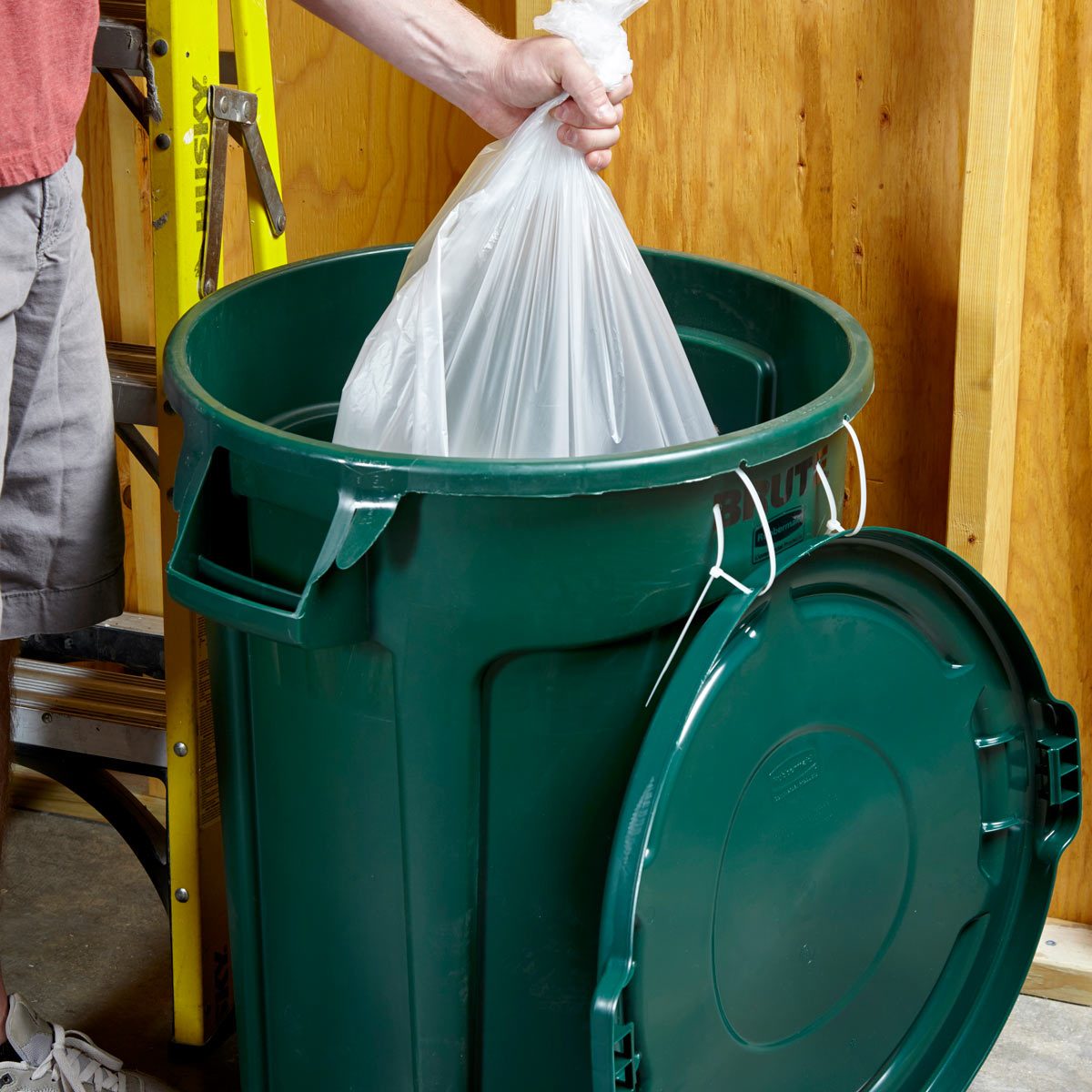
No More Flying Garbage Can Lids
Are you tired of losing your garbage can lid? “Hinge” it to the barrel with zip ties. Drill ¼-in. holes for the ties and double them for extra strength. The lid will flip open and stay attached to the barrel. You’ll never have to search for your lid again! Smart, right?! Now check out our 56 most brilliant PVC hacks for around your home.
Article source here: 23 Zip Tie Hacks That Make DIYing a Cinch
Article source here:
Amazon Prime Day Has Been Postponed — Here’s the New Date for 2020

Amazon Prime Day Has Been Postponed
Let’s face it: Many of us would be lost without Amazon Prime. We all have houses full of products from Amazon. And that’s no exception for the DIY fanatic. No project is complete without an addition to their toolbox, so check out these 30 Amazon best sellers under $30.
Thanks to its boundless inventory, we can always find what we’re looking for on Amazon. It’s usually a good deal, too. That’s kind of Amazon’s thing, especially when Amazon Prime Day rolls around. Usually covering a 48-hour period in July (it began as single day before expanding), Prime Day is Black Friday for Amazon shoppers, offering incredible prices on everything from vacuums to Bluetooth lights.
But of course, 2020 isn’t a normal year. Like everything else, Prime Day had to be adjusted and rescheduled. Here’s when this day of Prime deals is happening.
When Is Prime Day?
Prime Day has moved to October, likely because of COVID-related shortages and shipping delays. Amazon hasn’t officially announced a new date, but a CNBC report suggested the week of October 5 as the likely time. In the grand scheme of COVID-related delays, it’s not so bad. What’s three more months?
What Should I Buy on Prime Day?
First things first: If you want to participate in Prime Day, you’ve got to have Amazon Prime! Once you’re signed up, all kinds of doors open for you, including incredible savings on expensive household items (like wireless remote digital meat thermometers). And if you don’t have a ton of cash to spare, Amazon still has you covered: They’ve got plenty of products under $25 for your workshop, garden and home.
In the past, Prime Day offered some jaw-dropping deals on home goods, too. So if you’re looking to change up your living space, you’ll want to get Prime and start filling your cart. There’s something for everyone on Prime Day, and we’re choosing to see this delay as more time we can spend making our shopping lists.
Plus, check out these 11 things Amazon won’t sell anymore. Here are several other items you can’t get on Amazon — most of which Amazon has never sold!
Article source here: Amazon Prime Day Has Been Postponed — Here’s the New Date for 2020
Article source here:
8 Mosquito-Repelling Plants You Need in Your Backyard ASAP

Basil
Basil is not just for adding amazing flavor to your favorite dishes. This herb has major gardening benefits, like attracting bees, enhancing the flavor of other plants, and perhaps most important, repelling pesky mosquitoes. Matteo Grader, a pest control specialist for the London-based pest control company, Panther Pest Control, says gardeners highly recommend planting basil in the garden as a mosquito deterrent, thanks to its strong scent. Grader recommends also growing basil to make a natural mosquito repellent that won’t harm your other plants. To do this, take about 100 grams of fresh basil leaves, picked right from your garden. Pour a half-cup of boiling water onto the leaves, and then a half-cup of vodka. Mix thoroughly and add the mixture to a clean spray bottle. Spray your natural, basil-based repellent in your outdoor area to keep mosquitoes at bay. Find out these expert tips for keeping mosquitos away this summer.
Article source here: 8 Mosquito-Repelling Plants You Need in Your Backyard ASAP
Article source here:
9 Things You Should Never Google

Things You Don’t Want to See in Ads Later
You may have an odd question about diaper rash ointments for your friend’s baby, but if you Google it, good luck! Chances are, every time you open up a page online, there will be an ad for said diaper rash ointment for weeks to come. Speaking of the Internet, here’s how to increase your internet speed for faster browsing when searching for DIY projects!
Article source here: 9 Things You Should Never Google
Article source here:
9 Unlucky Things to Never Keep in Your Home
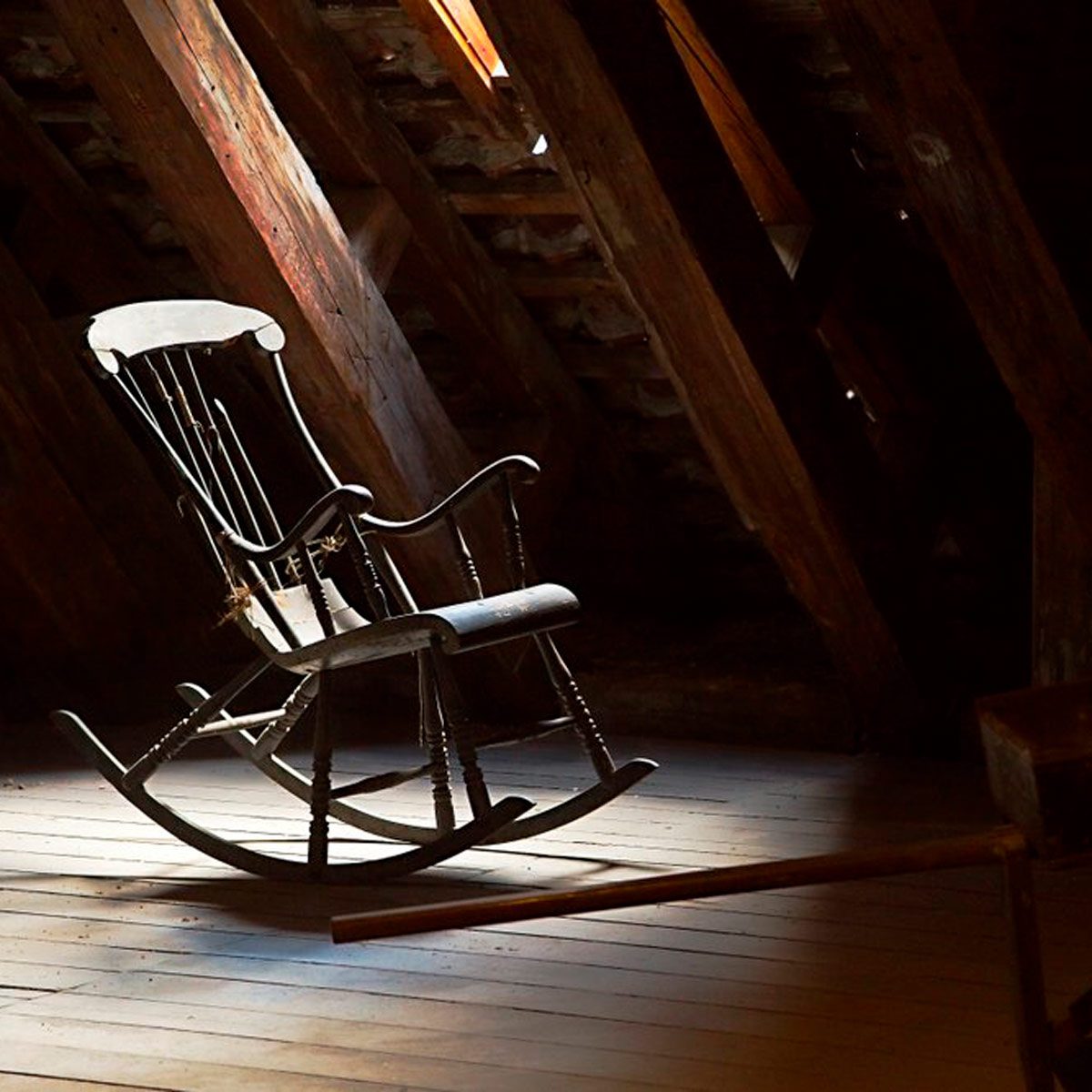
Rocking Chairs
Wait… did that chair just move?! No, it was just the wind… right? Just imagining a creaky old rocking chair, slowly moving back and forth in a dark, deserted room, is probably enough to make you understand why superstitious people prefer their chairs firmly on the floor. According to Irish legend, an empty rocking chair is an open invitation for evil spirits to take a seat. If a chair moves on its own, that’s a sure sign that a specter has already taken residence. Perhaps you don’t have ghosts, but these common house problems often haunt homeowners this time of year.
Article source here: 9 Unlucky Things to Never Keep in Your Home
Article source here:
Cheap Handy Hints to Fix Common Home Issues
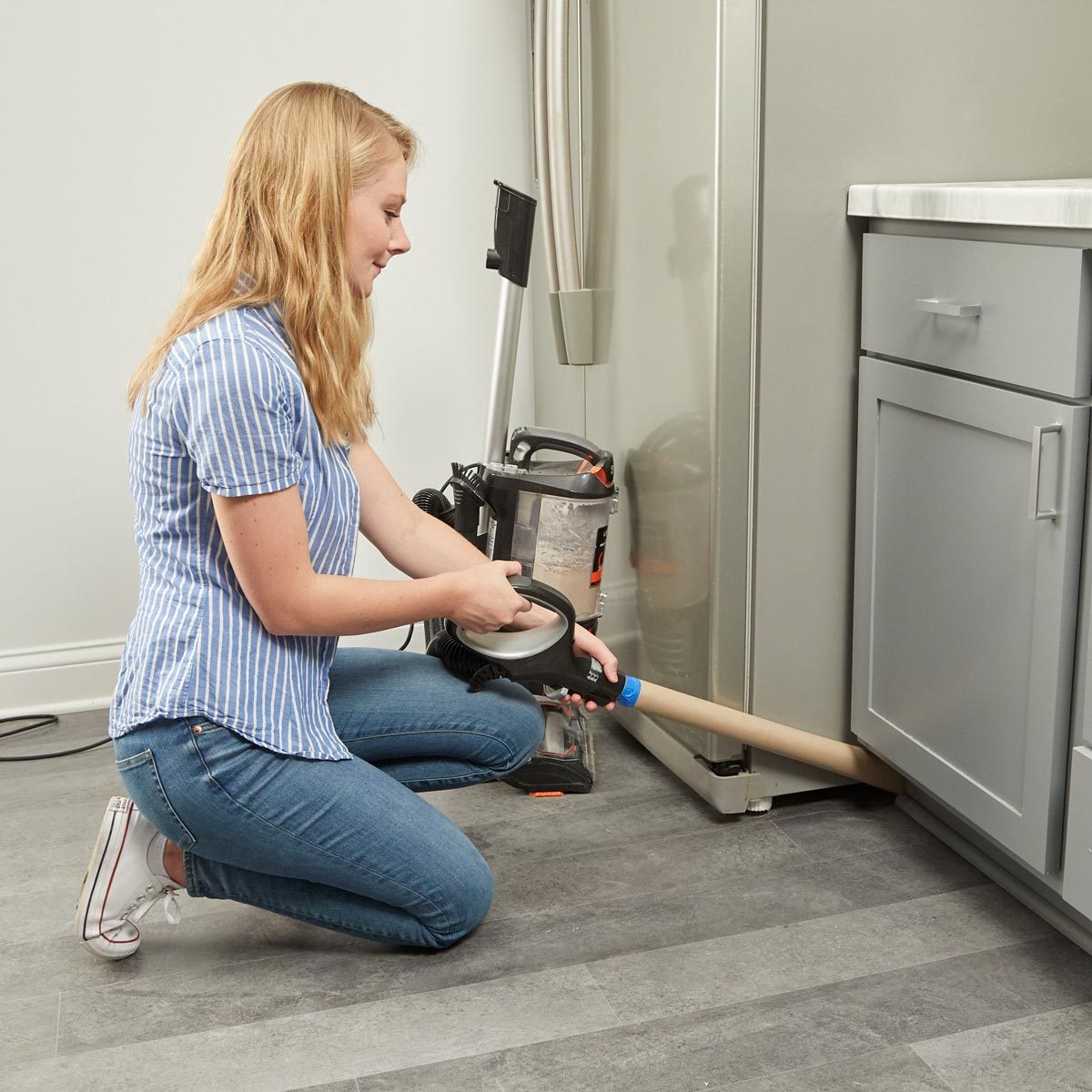
Vacuum Extension Tube
A cardboard wrapping paper tube makes a handy vacuum hose extender. Tape or just hold the tube on the end of the vacuum cleaner’s hose. You’ll be able to easily reach ceilings as well as under furniture. Also, the cardboard is flexible, so you can flatten it to get into narrow spaces, such as alongside or under the refrigerator. Check out these brilliant ways to reuse all those cardboard tubes.
Article source here: Cheap Handy Hints to Fix Common Home Issues
Article source here:
7 Things You Should Never Clean with Vinegar
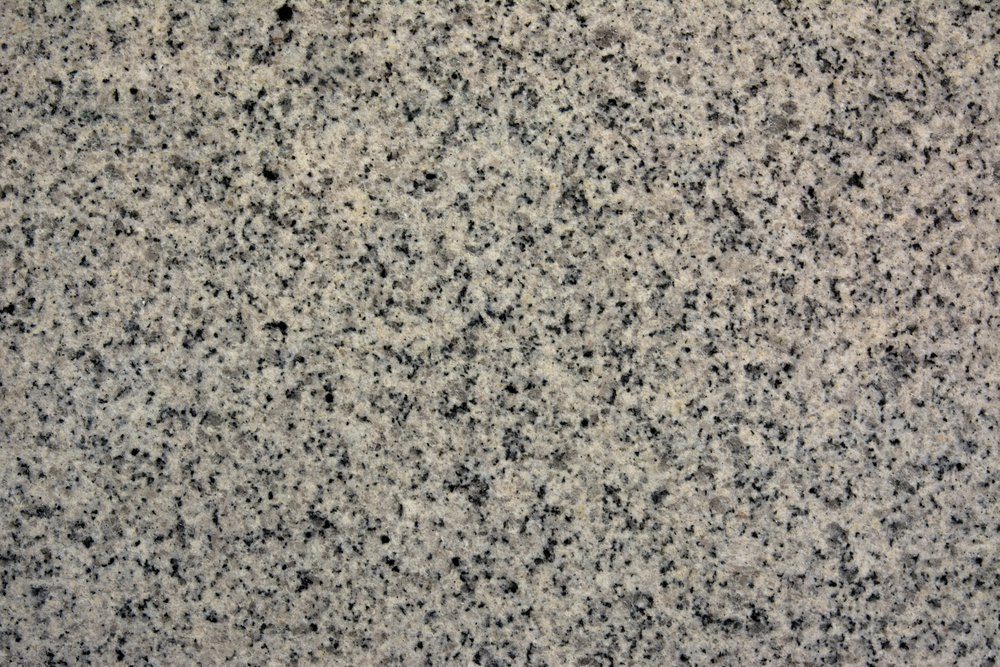
Granite and Marble Countertops
Using vinegar to clean your granite or marble countertops can ruin their smooth, shiny surface. “The acidic cleaners may etch the granite top and leave a dull or discolored spot behind,” says Lily Cameron, a cleaning professional and supervisor at Fantastic Services. “Instead, a safer cleaning solution is to use a mixture made of 5 drops of dish soap, seven-ten drops of rubbing alcohol, and a cup of water.” Check out these cleaning hacks you’ll want to steal from professional house cleaners.
Article source here: 7 Things You Should Never Clean with Vinegar
Article source here:
June Sees Highest Levels of New Home Sales Since Great Recession

According to data from the U.S. Census Bureau, new home sales were up 13.8 percent in June compared to the month before. Sales of newly-built single-family homes rose to a seasonally-adjusted annual rate of 776,000 units, up nearly seven percent from June 2019.
“It is quite surprising and remarkable that, in the midst of a global pandemic, contract activity for home purchases is higher compared to one year ago,” Lawrence Yun, chief economist for the National Association of Realtors, told CNBC.
Low mortgage rates and pent-up demand from construction activity shutdowns earlier in the year have given the housing industry an economic boost, driving the industry forward despite coronavirus concerns. This upward trend has left builders increasingly optimistic, as reflected in the latest Housing Market Index from the National Association of Home Builders.
“Along with rising builder sentiment, we are seeing increasing consumer demand in the suburbs, exurbs and rural areas,” said NAHB Chief Economist Robert Dietz. “At the same time, builders are dealing with supply-side concerns such as rising material costs, particularly lumber, which surpassed its 2018 price peak this week. Nonetheless, low inventory levels point to construction gains ahead.”
Economic data from the Federal Reserve Bank of St. Louis shows that housing inventory levels are indeed low. Inventory fell to a 4.7 months supply in June, a mark seven percent lower than last year and the lowest level since 2016. Of the 307,000 new single-family homes for sale, only 69,000 were finished and ready to occupy.
The median sales price of a new single-family home was $329,200.
“While the outlook is promising, sharply rising lumber prices are concerning,” Yun said to CNBC. “A reduction in tariffs — even if temporary — would help increase home building and thereby spur faster economic growth.”
Article source here: June Sees Highest Levels of New Home Sales Since Great Recession
Amazon Prime Day Has Been Postponed — Here’s the New Date for 2020

Amazon Prime Day Has Been Postponed
Let’s face it: Many of us would be lost without Amazon Prime. We all have houses full of products from Amazon. And that’s no exception for the DIY fanatic. No project is complete without an addition to their toolbox, so check out these 30 Amazon best sellers under $30.
Thanks to its boundless inventory, we can always find what we’re looking for on Amazon. It’s usually a good deal, too. That’s kind of Amazon’s thing, especially when Amazon Prime Day rolls around. Usually covering a 48-hour period in July (it began as single day before expanding), Prime Day is Black Friday for Amazon shoppers, offering incredible prices on everything from vacuums to Bluetooth lights.
But of course, 2020 isn’t a normal year. Like everything else, Prime Day had to be adjusted and rescheduled. Here’s when this day of Prime deals is happening.
When Is Prime Day?
Prime Day has moved to October, likely because of COVID-related shortages and shipping delays. Amazon hasn’t officially announced a new date, but a CNBC report suggested the week of October 5 as the likely time. In the grand scheme of COVID-related delays, it’s not so bad. What’s three more months?
What Should I Buy on Prime Day?
First things first: If you want to participate in Prime Day, you’ve got to have Amazon Prime! Once you’re signed up, all kinds of doors open for you, including incredible savings on expensive household items (like wireless remote digital meat thermometers). And if you don’t have a ton of cash to spare, Amazon still has you covered: They’ve got plenty of products under $25 for your workshop, garden and home.
In the past, Prime Day offered some jaw-dropping deals on home goods, too. So if you’re looking to change up your living space, you’ll want to get Prime and start filling your cart. There’s something for everyone on Prime Day, and we’re choosing to see this delay as more time we can spend making our shopping lists.
Plus, check out these 11 things Amazon won’t sell anymore. Here are several other items you can’t get on Amazon — most of which Amazon has never sold!
Article source here: Amazon Prime Day Has Been Postponed — Here’s the New Date for 2020
8 Mosquito-Repelling Plants You Need in Your Backyard ASAP

Basil
Basil is not just for adding amazing flavor to your favorite dishes. This herb has major gardening benefits, like attracting bees, enhancing the flavor of other plants, and perhaps most important, repelling pesky mosquitoes. Matteo Grader, a pest control specialist for the London-based pest control company, Panther Pest Control, says gardeners highly recommend planting basil in the garden as a mosquito deterrent, thanks to its strong scent. Grader recommends also growing basil to make a natural mosquito repellent that won’t harm your other plants. To do this, take about 100 grams of fresh basil leaves, picked right from your garden. Pour a half-cup of boiling water onto the leaves, and then a half-cup of vodka. Mix thoroughly and add the mixture to a clean spray bottle. Spray your natural, basil-based repellent in your outdoor area to keep mosquitoes at bay. Find out these expert tips for keeping mosquitos away this summer.
Article source here: 8 Mosquito-Repelling Plants You Need in Your Backyard ASAP
9 Things You Should Never Google

Things You Don’t Want to See in Ads Later
You may have an odd question about diaper rash ointments for your friend’s baby, but if you Google it, good luck! Chances are, every time you open up a page online, there will be an ad for said diaper rash ointment for weeks to come. Speaking of the Internet, here’s how to increase your internet speed for faster browsing when searching for DIY projects!
Article source here: 9 Things You Should Never Google
9 Unlucky Things to Never Keep in Your Home

Rocking Chairs
Wait… did that chair just move?! No, it was just the wind… right? Just imagining a creaky old rocking chair, slowly moving back and forth in a dark, deserted room, is probably enough to make you understand why superstitious people prefer their chairs firmly on the floor. According to Irish legend, an empty rocking chair is an open invitation for evil spirits to take a seat. If a chair moves on its own, that’s a sure sign that a specter has already taken residence. Perhaps you don’t have ghosts, but these common house problems often haunt homeowners this time of year.
Article source here: 9 Unlucky Things to Never Keep in Your Home
Cheap Handy Hints to Fix Common Home Issues

Vacuum Extension Tube
A cardboard wrapping paper tube makes a handy vacuum hose extender. Tape or just hold the tube on the end of the vacuum cleaner’s hose. You’ll be able to easily reach ceilings as well as under furniture. Also, the cardboard is flexible, so you can flatten it to get into narrow spaces, such as alongside or under the refrigerator. Check out these brilliant ways to reuse all those cardboard tubes.
Article source here: Cheap Handy Hints to Fix Common Home Issues
7 Things You Should Never Clean with Vinegar

Granite and Marble Countertops
Using vinegar to clean your granite or marble countertops can ruin their smooth, shiny surface. “The acidic cleaners may etch the granite top and leave a dull or discolored spot behind,” says Lily Cameron, a cleaning professional and supervisor at Fantastic Services. “Instead, a safer cleaning solution is to use a mixture made of 5 drops of dish soap, seven-ten drops of rubbing alcohol, and a cup of water.” Check out these cleaning hacks you’ll want to steal from professional house cleaners.
Article source here: 7 Things You Should Never Clean with Vinegar
Wednesday, July 29, 2020
How to Plant a Maple Tree
Pick an Area that Drains Well
- Choose a sunny location. You’re looking for a spot where water doesn’t pool after a heavy rain.
- Pro Tip: Understand that a maple will be a robust tree at maturity, so be sure to consider the location of nearby trees, buildings and power lines.
Article source here: How to Plant a Maple Tree
Article source here:
14 Things You Should Never Do During a Power Outage
Delay Phoning It In
Power companies need to know when your service has been interrupted, and the sooner the better. Even if you think the outage is widespread and it’s probably already been phoned it, it’s best to assume otherwise, and make the call yourself. It’s quite possible that the outage is localized, and if you don’t phone it in, no one will. Fallen trees landing on power lines, broken poles during a windstorm, and other weather-related equipment failures can all lead to small, localized outages that it’s in your best interest to phone it right away. Here are some great electricity saving tips.
Article source here: 14 Things You Should Never Do During a Power Outage
Article source here:
8 Things You Should NOT Do With Spray Foam

Things You Should NOT Do With Spray Foam
Spray foam is a great insulation option, but it is especially demanding to apply because it is sticky and dries quickly. The instructions that come with spray foam have to be followed exactly in order to achieve optimal results. In fact, it is incredibly important to study the instructions so you can avoid how not to use it.
1. Use Spray Foam Without Solvent Handy
Spray foam is tough to use neatly, even when you’ve got lots of experience with the stuff. That’s why those who use it regularly never buy a can of spray foam without also buying a can of foam solvent. Sold in metal canisters similar in shape and size to spray foam cans, foam solvent is a liquid designed to chemically dissolve spray foam before it hardens. It’s perfect for cleaning the inevitable drips of foam off your floors clothes, and hands as you insulate. Just be sure to wash your hands thoroughly if you do use it on your hands.
2. Buy Expired Spray Foam
Like food, expanding foam is best when it’s fresh or at least not expired. So always make sure you’re getting a fresh batch by checking the `Best by’ date on the bottom of the can. If you’ve got a partially used can of foam you think is still good, but the dispensing straw is clogged with hardened foam, here’s a tip for unclogging it.
3. Leave Your Hands, Arms and Eyes Exposed
Expanding foam is nearly impossible to keep off your hands. And once it’s there, it’s equally hard to get it off. So unless you want to wear the foam for awhile, put on gloves. Disposable vinyl or nitrile gloves are a good choice. And wear old clothes because you’ll probably get foam on those, too. When working on larger insulation projects, consider disposable coveralls with a hood, along with gloves, a face mask and eye protection.
4. Use Spray Foam Around Electrical Boxes
When there is no insulation between the back of an electrical box and an outside wall, it may be possible to add insulation behind it. However, be careful not to get the foam inside the box because it will jam up parts. Plus, many spray foams are flammable. So be sure to use low-expanding foam behind the electrical box, which fills gaps without applying much force. See how you can seal drafts around electrical outlets.
5. Use Spray Foam Around Recessed Ceiling Canister Lights
These lights are a prime area for heat loss if they’re installed on the underside of your roof, but be careful about some types of spray foam insulation around the top of ceiling light boxes. Th can trap heat and increase the danger of fire. So make sure recessed canister lights are rated for close contact with insulation before enclosing them in this way. You can still fill air gaps around the electrical boxes for recessed light fixtures with an appropriately sized gasket. Here’s a case for why you should use spray foam over fiberglass insulation.
6. Use High-Expansion Spray Foam Around Windows and Doors
Sealing around windows and doors is one of the most common uses for expanding foam. But the high-expansion stuff can actually push the jamb inward, making them impossible to open. Avoid this by using minimal expanding foam. It’s formulated to fill the space around windows and doors without excess expansion. Look for cans labeled for use on windows and doors. Another good idea is to fill the space with two layers. Push the applicator tip all the way to the back of the space and move it quickly along as you pull the trigger. Let this first layer expand and cure. Then add another if necessary. Did you know special spray foam can even be used for concrete repair?
7. Set the Can Wherever
A problem with expanding foam is that sometimes it expands when you don’t want it to, like when you’re done foaming, set the can down, and some excess foam drips from the nozzle. One way to avoid this is to keep a cardboard box handy and always set the foam can in the box to catch the drips and to prevent a big mess.
8. Wipe Away the Foam Mess Immediately
When foam goes where you don’t want it, you’ll be tempted to wipe it up. DON’T (With the exception of eyes and skin)! You’ll only spread the goo and make the mess worse. Instead, use solvent while it’s still wet, or let it harden completely and then scrape or sand it off. A utility knife with an extendible blade or a small, sharp, fine-toothed hand saw with a flexible blade are great for cutting off excess foam.
We all know spray foam is an insulation powerhouse. Here are some genius uses for this useful product that you may not have considered. Check out these 12 brilliant uses for spray foam that will blow your mind.
Article source here: 8 Things You Should NOT Do With Spray Foam
Article source here:
Monthly Home Maintenance Tasks You Should Take Care Of
Check The Monthly Cost of Running an Appliance
Knowing what different appliances in your home are costing you in electricity to run each month is very instructive. It can give you to motivation to better manage your electricity use, and make decisions on which appliances you really need, and which could be switched off more often. Use a device like the Kill-A-Watt to calculate a dollar figure for your plug-in appliances. Test a different appliance every month, and get a sense of your electricity usage. Save electricity with these great tips.
Article source here: Monthly Home Maintenance Tasks You Should Take Care Of
The 10 Most Common National Electric Code Violations
Doing Electrical Work for Friends and Family
Many jurisdictions across North America allow you to do your own electrical work in your home. As long as it passes inspection, there’s no code violation concerns for DIYers handling their own wiring. Trouble is, once friends and family hear that you’re good at electrical work, requests to help with theirs may start coming. This is a code violation in most places. Working on your own electrical system is fine, but only licensed electricians can work on someone else’s.
Article source here: The 10 Most Common National Electric Code Violations
How to Plant a Maple Tree
Pick an Area that Drains Well
- Choose a sunny location. You’re looking for a spot where water doesn’t pool after a heavy rain.
- Pro Tip: Understand that a maple will be a robust tree at maturity, so be sure to consider the location of nearby trees, buildings and power lines.
Article source here: How to Plant a Maple Tree
14 Things You Should Never Do During a Power Outage
Delay Phoning It In
Power companies need to know when your service has been interrupted, and the sooner the better. Even if you think the outage is widespread and it’s probably already been phoned it, it’s best to assume otherwise, and make the call yourself. It’s quite possible that the outage is localized, and if you don’t phone it in, no one will. Fallen trees landing on power lines, broken poles during a windstorm, and other weather-related equipment failures can all lead to small, localized outages that it’s in your best interest to phone it right away. Here are some great electricity saving tips.
Article source here: 14 Things You Should Never Do During a Power Outage
8 Things You Should NOT Do With Spray Foam

Things You Should NOT Do With Spray Foam
Spray foam is a great insulation option, but it is especially demanding to apply because it is sticky and dries quickly. The instructions that come with spray foam have to be followed exactly in order to achieve optimal results. In fact, it is incredibly important to study the instructions so you can avoid how not to use it.
1. Use Spray Foam Without Solvent Handy
Spray foam is tough to use neatly, even when you’ve got lots of experience with the stuff. That’s why those who use it regularly never buy a can of spray foam without also buying a can of foam solvent. Sold in metal canisters similar in shape and size to spray foam cans, foam solvent is a liquid designed to chemically dissolve spray foam before it hardens. It’s perfect for cleaning the inevitable drips of foam off your floors clothes, and hands as you insulate. Just be sure to wash your hands thoroughly if you do use it on your hands.
2. Buy Expired Spray Foam
Like food, expanding foam is best when it’s fresh or at least not expired. So always make sure you’re getting a fresh batch by checking the `Best by’ date on the bottom of the can. If you’ve got a partially used can of foam you think is still good, but the dispensing straw is clogged with hardened foam, here’s a tip for unclogging it.
3. Leave Your Hands, Arms and Eyes Exposed
Expanding foam is nearly impossible to keep off your hands. And once it’s there, it’s equally hard to get it off. So unless you want to wear the foam for awhile, put on gloves. Disposable vinyl or nitrile gloves are a good choice. And wear old clothes because you’ll probably get foam on those, too. When working on larger insulation projects, consider disposable coveralls with a hood, along with gloves, a face mask and eye protection.
4. Use Spray Foam Around Electrical Boxes
When there is no insulation between the back of an electrical box and an outside wall, it may be possible to add insulation behind it. However, be careful not to get the foam inside the box because it will jam up parts. Plus, many spray foams are flammable. So be sure to use low-expanding foam behind the electrical box, which fills gaps without applying much force. See how you can seal drafts around electrical outlets.
5. Use Spray Foam Around Recessed Ceiling Canister Lights
These lights are a prime area for heat loss if they’re installed on the underside of your roof, but be careful about some types of spray foam insulation around the top of ceiling light boxes. Th can trap heat and increase the danger of fire. So make sure recessed canister lights are rated for close contact with insulation before enclosing them in this way. You can still fill air gaps around the electrical boxes for recessed light fixtures with an appropriately sized gasket. Here’s a case for why you should use spray foam over fiberglass insulation.
6. Use High-Expansion Spray Foam Around Windows and Doors
Sealing around windows and doors is one of the most common uses for expanding foam. But the high-expansion stuff can actually push the jamb inward, making them impossible to open. Avoid this by using minimal expanding foam. It’s formulated to fill the space around windows and doors without excess expansion. Look for cans labeled for use on windows and doors. Another good idea is to fill the space with two layers. Push the applicator tip all the way to the back of the space and move it quickly along as you pull the trigger. Let this first layer expand and cure. Then add another if necessary. Did you know special spray foam can even be used for concrete repair?
7. Set the Can Wherever
A problem with expanding foam is that sometimes it expands when you don’t want it to, like when you’re done foaming, set the can down, and some excess foam drips from the nozzle. One way to avoid this is to keep a cardboard box handy and always set the foam can in the box to catch the drips and to prevent a big mess.
8. Wipe Away the Foam Mess Immediately
When foam goes where you don’t want it, you’ll be tempted to wipe it up. DON’T (With the exception of eyes and skin)! You’ll only spread the goo and make the mess worse. Instead, use solvent while it’s still wet, or let it harden completely and then scrape or sand it off. A utility knife with an extendible blade or a small, sharp, fine-toothed hand saw with a flexible blade are great for cutting off excess foam.
We all know spray foam is an insulation powerhouse. Here are some genius uses for this useful product that you may not have considered. Check out these 12 brilliant uses for spray foam that will blow your mind.
Article source here: 8 Things You Should NOT Do With Spray Foam
Tuesday, July 28, 2020
25 Surprising Grilling Facts You Haven’t Heard 10 Times Before

Grilling Is a Way of Life
Grills are more than just an appliance; they symbolize a way of life for many people. Grilling has brought families and communities together since the first humans cooked food over a fire about 1.8 million years ago. Read on for more little known facts, tips and tricks that will make you fall in love with your trusty grill all over again. Find out answers to your 11 biggest grilling questions.
Note: Prices listed were accurate at press time; pricing fluctuations may occur.
Article source here: 25 Surprising Grilling Facts You Haven’t Heard 10 Times Before
Article source here:
25 Surprising Grilling Facts You Haven’t Heard 10 Times Before

Grilling Is a Way of Life
Grills are more than just an appliance; they symbolize a way of life for many people. Grilling has brought families and communities together since the first humans cooked food over a fire about 1.8 million years ago. Read on for more little known facts, tips and tricks that will make you fall in love with your trusty grill all over again. Find out answers to your 11 biggest grilling questions.
Note: Prices listed were accurate at press time; pricing fluctuations may occur.
Article source here: 25 Surprising Grilling Facts You Haven’t Heard 10 Times Before
Expert Tips On Building a Better Deck
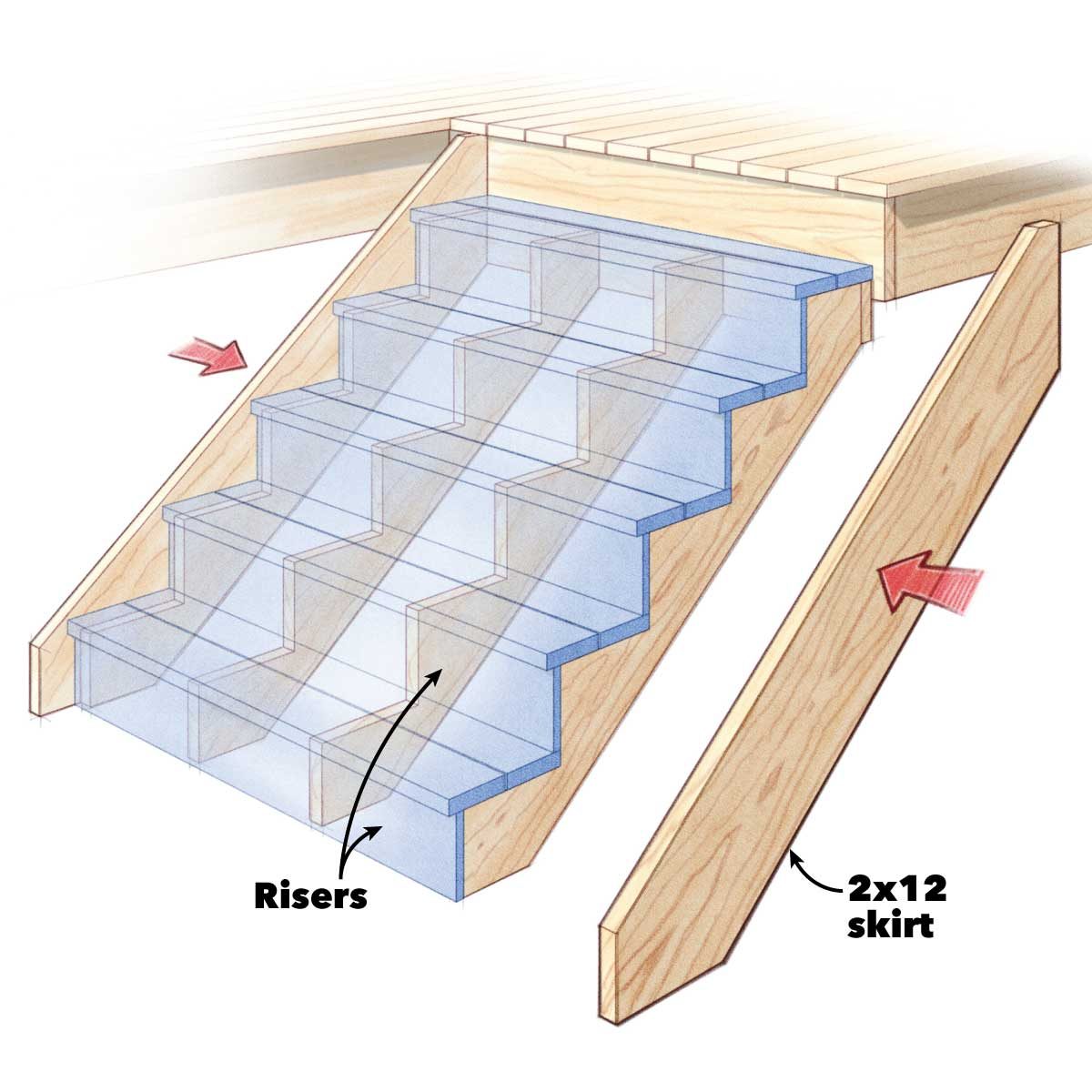
Build Better Stairs
Simple notched stair jacks are fine for interior stairs. They get nailed to wall studs for stability and are hidden once the house is finished. Not so with deck stairs. Naked, notched treated-wood stair jacks are unattractive and wobbly, and because there isn’t much meat to attach posts or pickets to, you’ll have wobbly handrails, too. But it’s easy to strengthen them and spruce them up. Adding sturdy, solid 2×12 skirts to the outside jacks and stair risers does it all. If your deck railings are also causing you stress, here’s how to fix them.
Article source here: Expert Tips On Building a Better Deck
Article source here:
10 Pieces of Furniture with Hidden Compartments

Bookcase
This bookcase offers 10 hidden compartments and would make a stylish addition to your living room, den or home office. Try building this piece of furniture yourself and you’ll have plenty of space to store your books and collectibles.
Article source here: 10 Pieces of Furniture with Hidden Compartments
Article source here:
14 Things Home Depot Employees Won’t Tell You
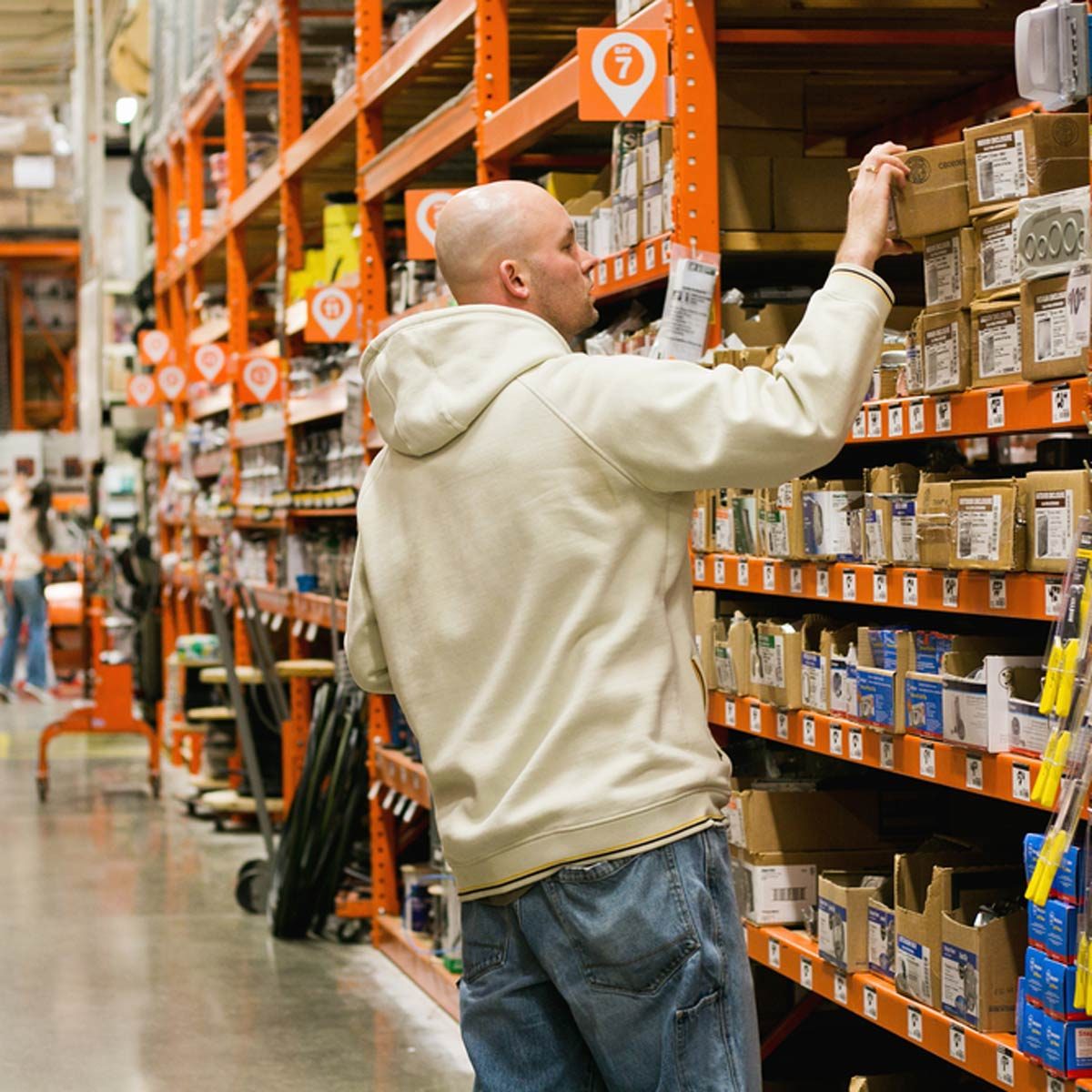
The Secret Language of Price Tags
Most retailers use a series of codes and special prices to secretly label their products. Sales associates use them to sort and move merchandise, but savvy shoppers who’ve broken the code can snatch up items when they’re at their lowest price point. In The Home Depot’s case, look for yellow sales tags. If the sales price ends with .06, then there are six weeks left before that item is priced lower. If the sales price ends with .03, then that item will either be moved to clearance or donated to charity in three weeks. By keeping an eye on those yellow tags, it’s possible to get even better deals on low-cost, high-value items that every DIYer will love.
Article source here: 14 Things Home Depot Employees Won’t Tell You
Article source here:
How to Make a DIY Indoor Herb Garden
Cut all pieces of wood Cut the wood for the base (A), sides (B), top cap (C), front and back top faces (D) and pot supports (E). All the co...
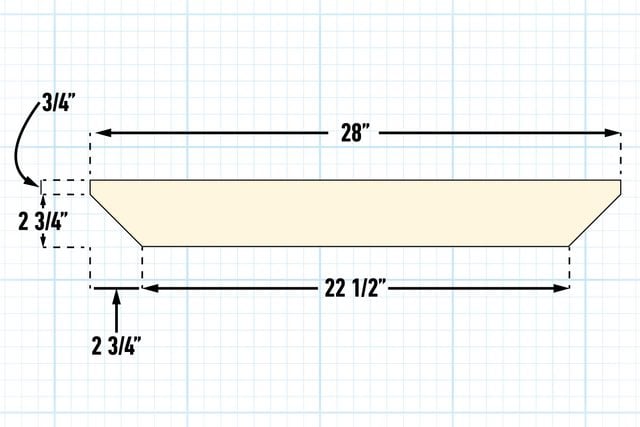
-
Below you’ll find all the products from Family Handyman’s Getaway kitchen moodboards. Kitchen 1: Modern Calacatta Gold Quartz Countertop...
-
Organic mulch and rock are two popular choices for home landscaping , and each has its benefits and drawbacks. Some people prefer the look ...
-
Below you’ll find all the products from Family Handyman’s Getaway kitchen moodboards. Kitchen 1: Modern Calacatta Gold Quartz Countertop...



